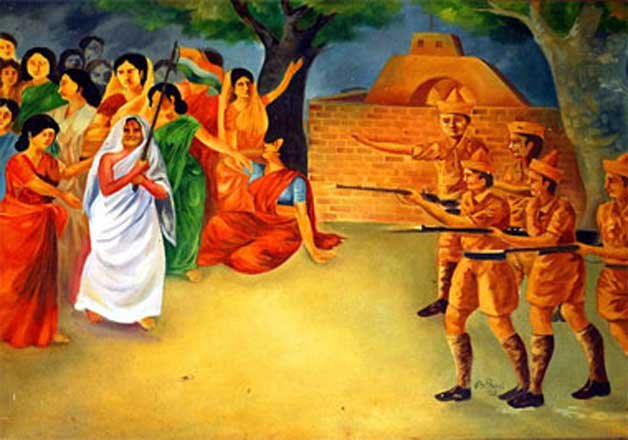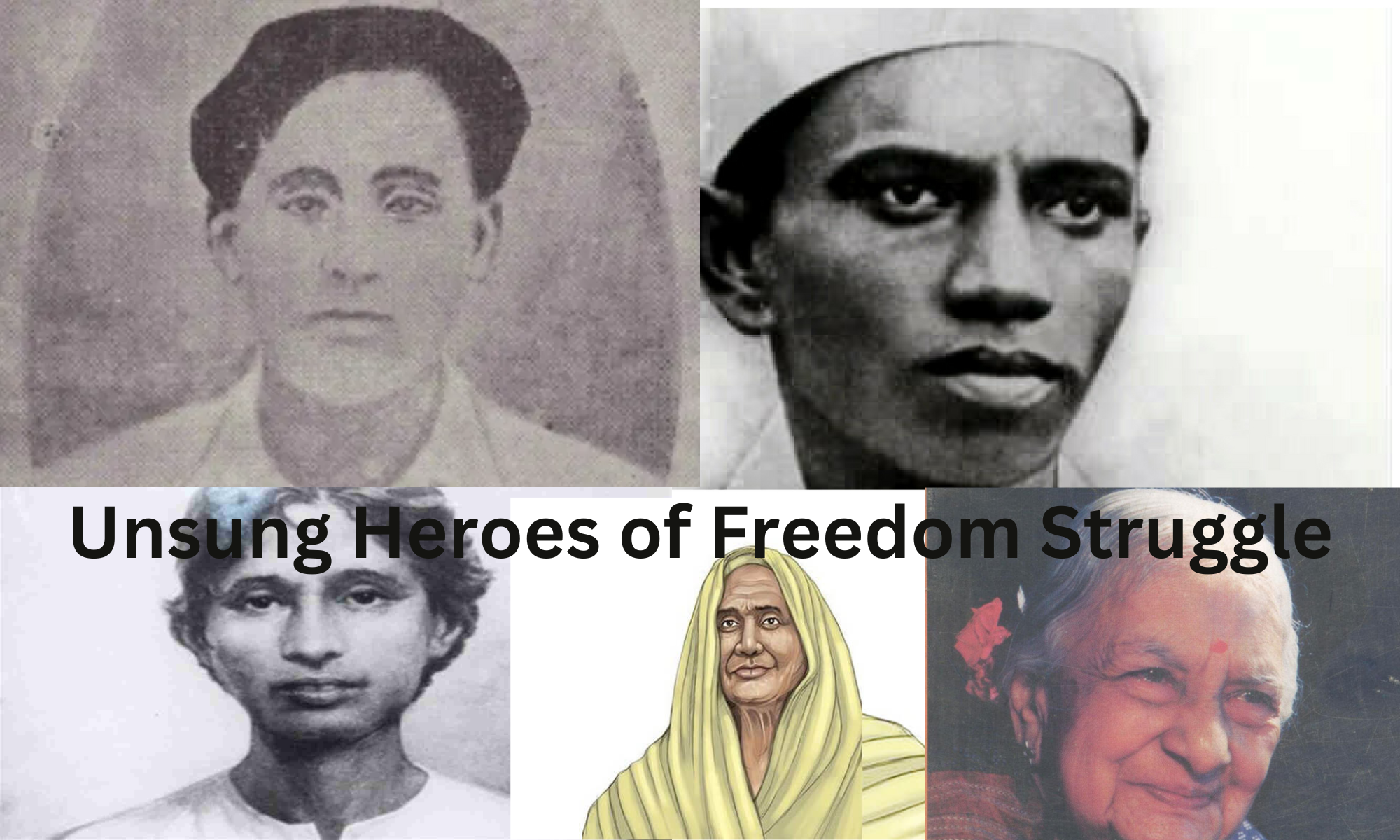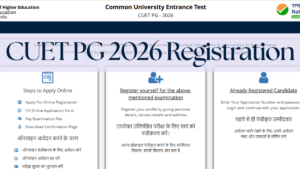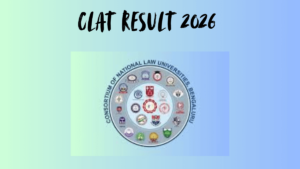Do you know Who is the Unsung Heroes of Freedom Struggle? Check here answer, There were so many freedom fighters involved in the freedom struggle for India. We do celebrate a lot of freedom fighters, but still some of them still go unpraised. So, here is the opportunity to praise and celebrate the unsung heroes of India with names, that we don’t do regularly.
Unsung Heroes of Freedom Struggle
The Unsung Heroes of India’s Freedom Struggle were the countless individuals whose sacrifices and contributions often went unnoticed in history. These brave souls, including tribal leaders, women, farmers, and ordinary citizens, played pivotal roles in resisting British rule. They led revolts, organized protests, and inspired mass movements, often paying the ultimate price for the nation’s freedom. Their stories, overshadowed by more prominent figures, remind us that India’s independence was not the achievement of a few but the collective effort of millions. Honoring these unsung heroes is crucial to understanding the true depth and diversity of India’s fight for freedom.
Top 5 Unsung Heroes of Freedom Struggle
Anant Laxman Kanhere
Anant Laxman Kanhere, a Nashik native who fought for Indian freedom, lived from 1892 to 1910. He killed the Collector of Nashik in British India on December 21, 1909. Jackson’s murder played a significant role in Maharashtra’s Indian Revolution as well as Nashik’s history. At the age of just 18, he was tried in Bombay court and executed by hanging on April 19, 1910, in the Thane Prison.
Tirupur Kumaran
Tiruppur Kumaran, also known as Kodi Kaatha Kumaran, Kumaran, or Kumarasamy Mudaliyar, was an Indian freedom fighter and revolutionary who participated in the movement for Indian independence. On October 4, 1904, he was born, and on January 11, 1932, he passed away. Kumarasamy Mudaliyar was born in Chennimalai, in the Madras Presidency of British India. His parents were Nachimuthu Mudaliyar and Karuppaayi. He established the Desa Bandhu Youth Association and planned protests against the British.
On January 11, 1932, he died from injuries he sustained during a police onslaught on the banks of the Noyyal River in Tiruppur while taking part in a protest march against the British government. Since he was waving the Indian Nationalists’ banner at the time of his death, which the British had forbade, he was given the epithet Kodi Kaatha Kumaran, which translates to “Kumaran who protected the flag.”
Komaram Bheem
In Adilabad, Telangana, Komaram Bheem belongs to the tribal Gond community. He grew up witnessing the exploitation of his people by zamindars, businesspeople, and forest officers (landowners). In the past, the Adivasi people engaged in “slash and burn” agriculture in the forests. They would clear land for farming by felling and burning trees. They could cultivate vegetables there because the ash made the land extremely productive. They would eventually move to another location in the forest and go on in the same manner. This gave the land in the former location time to recover and for the trees to reseed. At the time, it was a productive sustainable agricultural method.
However, the forest officials’ cruelty was so great that they stole the crops that the indigenous people had grown while claiming ownership of the area. Children from the Gondi tribe had their fingers amputated as a kind of punishment for allegedly cutting down trees unlawfully. He afterwards fled to Assam and began working at a tea plantation there. He ultimately lost his battle for the rights of tea workers and was imprisoned. He managed to escape and return four days later to fight for tribal self-governance. He organised a guerilla army and oversaw 300 soldiers. The phrase they used was “Jal Jangal Zameen.” The tribal people still use this motto today.
Khudiram Bose
Khudiram Bose, often referred to as Khudiram Basu, was a Bengal Presidency-born Indian revolutionary who opposed British administration in India. From 3 December 1889 until 11 August 1908, he was alive. One of the young victims of the Indian Independence Movement, he and Prafulla Chaki were found guilty and killed for their roles in the Muzaffarpur Conspiracy Case.
Khudiram and Prafulla Chaki made an attempt to kill the British magistrate by setting off bombs on the carriage they thought Magistrate Douglas Kingsford was in. However, when the bombs exploded and two British women died, Magistrate Kingsford was seated in a different vehicle. Prafulla killed himself with a gun before being apprehended. Khudiram was arrested, tried for the murders of the two women, and ultimately sentenced to death.
Veerapandiya Kattabomman
Veerapandiya Kattabomman, an Indian liberation fighter from the late 1700s, was one of the first. He was a Palayakarar, a village-controlling feudal ruler. The Palayakarars, also known as Polygars, were initially chosen during the reign of the Vijayanagara Empire and later rose to power as independent kings under the Nawab of Arcot, a friend of the British East India Company. The Palayakarar of Tamil Nadu’s Thoothukudi district was Veerapandiya Kattabomman. The Nawab granted the British permission to levy taxes on the Palayakarars at that time since they had put him in a financial trap.
The British made an attempt to take over Fort Kattabomman. Despite holding the fort, Kattabomman and his forces understood they would not be able to repel British cannons. He then exited the fort by a covert tunnel and entered a hiding place. However, the Pudukottai king betrayed him when the British applied pressure, leading to his capture and subsequent public hanging in Thoothukudi on October 16, 1799. His brazen defiance served as an example for many upcoming generations of young freedom fighters and helped lay the foundation for the Indian freedom movement.
Peer Ali Khan
Born in 1812 and dying on July 7, 1857, Peer Ali Khan was an Indian revolutionary and rebel who took part in the movement for Indian independence. He was given the death sentence for his involvement in the 1857 independence movement. Khan, who worked as a bookbinder, used to covertly transport important flyers, booklets, and coded signals to liberation fighters. He frequently ran political campaigns against the British government. He and his 33 adherents were imprisoned on July 4, 1857. On July 7, 1857, William Tayler, the commissioner of Patna at the time, carried out the executions of Khan and 14 other rebels in full view of the people.
Birsa Munda
Birsa Munda, a member of the Munda tribe and a folk hero in India, lived from 15 November 1875 to 9 June 1900. He played a pivotal role in the history of the Indian independence movement by leading a tribal religious millenarian movement that emerged in the Bengal Presidency (now Jharkhand) in the late 19th century, under the British Raj. The Munda belt, which includes Khunti, Tamar, Sarwada, and Bandgaon, saw the majority of the uprising.
Hidden Freedom Fighters of India
India’s journey to independence is adorned with the sacrifices and valor of countless individuals. While figures like Mahatma Gandhi, Jawaharlal Nehru, and Subhas Chandra Bose are household names, many freedom fighters remain lesser-known despite their significant contributions. Here’s a tribute to some of these hidden heroes:
Matangini Hazra (1869–1942)
Background: Affectionately known as “Gandhi Buri” (Old Lady Gandhi), Matangini was an ardent participant in the Quit India Movement.
Contribution: Leading a procession of 6,000 supporters with the Indian flag in hand, she was shot multiple times by British police but continued marching, chanting “Vande Mataram” until her last breath.
Peer Ali Khan (1812–1857)
Background: An early revolutionary, Peer Ali Khan was one of the leaders during the 1857 uprising.
Contribution: Operating from Patna, he organized secret meetings and disseminated revolutionary literature. Captured and executed by the British, he became one of the first martyrs of India’s freedom struggle.
Aruna Asaf Ali (1909–1996)
Background: A prominent woman leader in the freedom movement.
Contribution: Known for hoisting the Congress flag during the Quit India Movement at Mumbai’s Gowalia Tank Maidan in 1942, leading to widespread protests. She also edited the underground magazine “Inquilab” to propagate nationalist ideas.
Tirot Sing (1802–1835)
Background: A chief of the Khasi people in Meghalaya.
Contribution: Led an armed rebellion against British attempts to annex the Khasi Hills. Utilizing guerrilla tactics, he resisted British forces until his capture. His legacy inspires the Khasi community to this day.
Khudiram Bose (1889–1908)
Background: One of the youngest revolutionaries of the Indian independence movement.
Contribution: At just 18, he attempted to assassinate British Judge Kingsford. Although the mission failed, his capture and subsequent execution stirred nationalistic fervor across India.
Potti Sreeramulu (1901–1952)
Background: A dedicated Gandhian and advocate for linguistic rights.
Contribution: Undertook a 58-day hunger strike demanding the creation of a separate Andhra state for Telugu-speaking people. His death intensified the movement, leading to the state’s formation.
Velu Nachiyar (1730–1796)
Background: The queen of Sivaganga in Tamil Nadu.
Contribution: One of the first Indian queens to wage war against the British East India Company, she formed alliances and employed effective military strategies, reclaiming her kingdom from British control.
Bagha Jatin (Jatindranath Mukherjee) (1879–1915)
Background: A key leader of the Jugantar party, a revolutionary group in Bengal.
Contribution: Organized armed resistance against British rule. Notably engaged in the Indo-German conspiracy during WWI to procure arms for an uprising. Died in a gunfight with British forces, his bravery earning him the moniker “Bagha” (Tiger) Jatin.
Kanaklata Barua (1924–1942)
Background: A young Assamese freedom fighter.
Contribution: Led a procession of unarmed villagers during the Quit India Movement, attempting to hoist the national flag at a local police station. She was shot dead by police, symbolizing youthful bravery.
Alluri Sitarama Raju (1897–1924)
Background: A charismatic leader from Andhra Pradesh.
Contribution: Mobilized tribal communities in the Rampa Rebellion against British colonial policies. Employing guerrilla warfare, he challenged British forces until his capture and execution.
Kamala Das Gupta (1907–2000)
Background: A member of the Chhatri Sangha, a revolutionary women’s organization in Bengal.
Contribution: Actively involved in clandestine operations, including transporting explosives and disseminating revolutionary literature. Imprisoned multiple times for her activities.
Birsa Munda (1875–1900)
Background: A tribal leader and folk hero from the Munda tribe in Jharkhand.
Contribution: Led the Ulgulan (The Great Tumult) movement, mobilizing tribes against British land policies. His movement forced the British to enact the Chotanagpur Tenancy Act, protecting tribal land rights.
Kamaladevi Chattopadhyay (1903–1988)
Background: A social reformer, freedom fighter, and feminist.
Contribution: Instrumental in the Salt Satyagraha movement. Post-independence, she championed the cause of Indian handicrafts, establishing institutions like the National School of Drama and Sangeet Natak Akademi.
Durgawati Devi (Durga Bhabhi) (1907–1999)
Background: An associate of Bhagat Singh and other revolutionaries.
Contribution: Assisted Bhagat Singh in evading arrest post the Saunders killing by disguising as his wife. Actively participated in revolutionary activities and later established educational institutions.
Tanguturi Prakasam (1872–1957)
Background: Revered as “Andhra Kesari” (Lion of Andhra).
Contribution: Displayed exceptional courage during the protests against the Simon Commission, baring his chest to police guns. Post-independence, he became the first Chief Minister of the Andhra State.
These brave souls, among countless others, laid down their lives and comforts to ensure India’s freedom. Their stories, though not always highlighted, form the bedrock of India’s rich tapestry of resistance and resilience. Remembering them is not just an act of gratitude but also a commitment to uphold the values they stood for.
Unsung Heroes of Freedom Struggle Drawings



Unsung Heroes of Freedom Struggle Female
Jhalkari Bai
Kamaladevi Chattopadhyay
From 3 April 1903 to 29 October 1988, Kamaladevi Chattopadhyay was a social reformer and proponent of Indian independence. Her contributions to the campaign for Indian independence, her part in the resurgence of Indian handicrafts, handlooms, and theatre in independent India, and her groundbreaking work to raise the socioeconomic standing of Indian women made her a household name. She was the first woman to run for office in India from the Madras Constituency, and even though she lost, she opened the door for upcoming female candidates.
Matangini Hazra
Matangini Hazra, an Indian revolutionary who lived from 19 October 1870 to 29 September 1942, participated in the fight for Indian independence up until that time, when she was shot and executed by British Indian police in front of the Tamluk Police Station. Gandhi buri, Bengali meaning “old woman Gandhi,” was used in jest to allude to her.









 CUET PG 2026 Registration Form OUT at ex...
CUET PG 2026 Registration Form OUT at ex...
 AILET Result 2026 Release Date, How to D...
AILET Result 2026 Release Date, How to D...
 CLAT Result 2026 Out, Download Scorecard...
CLAT Result 2026 Out, Download Scorecard...














